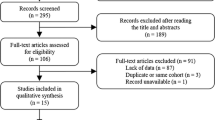Abstract
Background
The incidence of right-sided colon cancers has been increasing in recent years. It is unclear whether patient prognosis varies by tumor location. In this study, we have compared the survival of right-and left-sided colon cancers in a longitudinal population-based database.
Methods
A retrospective survival analysis was performed using the Surveillance, Epidemiology, and End Results Program (SEER) database between 1988 and 2003 on subjects who underwent surgical resection for the a primary diagnosis of pathologically confirmed invasive colon adenocarcinoma. Cox proportional hazard regression analysis was used to assess long-term survival outcomes comparing right-sided (cecum to transverse colon, excluding appendix) versus left-sided (splenic flexure to sigmoid, excluding rectum) colon cancers.
Results
A total of 77,978 subjects were identified with adenocarcinoma of the colon. Overall median survival was 83 months. Median survival for right-sided cancers was 78 vs. 89 months for left-sided cancers (P < .001). By Cox proportional hazard regression analysis, controlling for statistically significant confounders, including age, sex, race, marital status, tumor stage, tumor size, histologic grade, number of lymph nodes examined, and year of diagnosis, right-sided colon cancers were associated with a 5% increased mortality risk compared with left-sided colon cancers (hazard ratio, 1.04; 95% confidence interval, 1.02–1.07). These findings were consistent across subsets of subjects.
Conclusion
On the basis of analysis of information from the SEER database, we found that right-sided colon cancers have a worse prognosis than left-sided colon cancers. The reason for this remains unclear but may be due to biological and/or environmental factors and may have particular bearing, given the rising incidence of right-sided colon cancers.




Similar content being viewed by others
References
Jemal A, Siegel R, Ward E, et al. Cancer statistics, 2008. CA Cancer J Clin 2008; 58:71–96
Obrand DI, Gordon PH. Continued change in the distribution of colorectal carcinoma. Br J Surg 1998; 85:246–8
Levi F, Randimbison L, La Vecchia C. Trends in subsite distribution of colorectal cancers and polyps from the Vaud Cancer Registry. Cancer 1993; 72:46–50
Jass JR. Subsite distribution and incidence of colorectal cancer in New Zealand, 1974–1983. Dis Colon Rectum 1991; 34:56–9
Iacopetta B. Are there two sides to colorectal cancer? Int J Cancer 2002; 101:403–8
Distler P, Holt PR. Are right-and left-sided colon neoplasms distinct tumors? Dig Dis 1997; 15:302–11
Glebov OK, Rodriguez LM, Nakahara K, et al. Distinguishing right from left colon by the pattern of gene expression. Cancer Epidemiol Biomarkers Prev 2003; 12:755–62
Birkenkamp-Demtroder K, Olesen SH, Sorensen FB, et al. Differential gene expression in colon cancer of the caecum versus the sigmoid and rectosigmoid. Gut 2005; 54:374–84
Reifferscheid M, Fass J, Hartung R, et al. [Special aspects of right colon cancer]. Langenbecks Arch Chir 1987; 371:193–200
Surveillance, Epidemiology, and End Results Program (SEER). Public-Use Data (1973–2002) released April 2005, based on November 2004 submission. Available at: http://seer.cancer.gov/data/. Accessed 29 August 2006
Zippin C, Lum D, Hankey BF. Completeness of hospital cancer case reporting from the SEER Program of the National Cancer Institute. Cancer 1995; 76:2343–50
Langman J. Medical Embryology. 4th ed. Baltimore: Williams & Wilkins; 1981
Gervaz P, Bucher P, Morel P. Two colons—two cancers: paradigm shift and clinical implications. J Surg Oncol 2004; 88:261–6
Popat S, Hubner R, Houlston RS. Systematic review of microsatellite instability and colorectal cancer prognosis. J Clin Oncol 2005; 23:609–18
Malesci A, Laghi L, Bianchi P, et al. Reduced likelihood of metastases in patients with microsatellite-unstable colorectal cancer. Clin Cancer Res 2007; 13:3831–9
Acknowledgment
R.A.M. was supported on the Ruth L. Kirschstein National Research Service Award (T32DK007713) while undertaking this study.
Author information
Authors and Affiliations
Corresponding author
Rights and permissions
About this article
Cite this article
Meguid, R.A., Slidell, M.B., Wolfgang, C.L. et al. Is There a Difference in Survival Between Right- Versus Left-Sided Colon Cancers?. Ann Surg Oncol 15, 2388–2394 (2008). https://doi.org/10.1245/s10434-008-0015-y
Received:
Revised:
Accepted:
Published:
Issue Date:
DOI: https://doi.org/10.1245/s10434-008-0015-y




